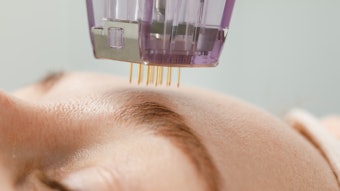
A January 2023 study in Nature Regenerative Medicine found that treating skin scars with hair follicle transplants led the scars to behave more like uninjured skin, harboring new cells and blood vessels, remodeled collagen and expressing genes found in healthy unscarred skin. The findings could revolutionize scar treatments both on the skin and inside the body.
Related: PRP Can Be Effective Treatment for Scar Management
Scar tissue in the skin lacks hair, sweat glands, blood vessels and nerves, which are vital for regulating body temperature and detecting pain and other sensations. Hairy skin heals faster and scars less than non-hairy skin, and hair transplants had previously been shown to aid wound healing, according to Science Daily.
To test their hypothesis, researchers worked with Francisco Jiménez, M.D., lead hair transplant surgeon at the Mediteknia Clinic and associate research professor at University Fernando Pessoa Canarias in Gran Canaria, Spain. They transplanted hair follicles into the mature scars on the scalp of three participants. The researchers chose to study the most common and harmless type of scar, normotrophic scars, which usually form after surgery.
The researchers, checking the scars at two, four and six months post-treatment, found that the follicles facilitated architectural and genetic shifts in the scars towards a profile of healthy, uninjured skin. After transplantation, the follicles continued to produce hair and restore skin layers.
At six months post-transplant, the epidermis had doubled in thickness alongside increased cell growth, bringing it to around the same thickness as uninjured skin. The number of cells had doubled and the number of vessels had reached near healthy-skin levels. The hair transplants also reduced the density of the fibers, which allowed them to form a healthier, basket-weave pattern that reduced stiffness.
The presence of a hair follicle in the scar worked in this study because the scars were on the scalp. Researchers are working to uncover the underlying mechanisms for the facilitated change so they can develop therapies that remodel scar tissue towards healthy skin without requiring transplantation of a hair follicle and growth of hair fiber.
The researchers in the study could not determine precisely how the hair follicle transplants caused the significant change in the scarred skin. They hypothesized that transplanting growing hair follicles into scar tissue might induce scars to remodel themselves.











